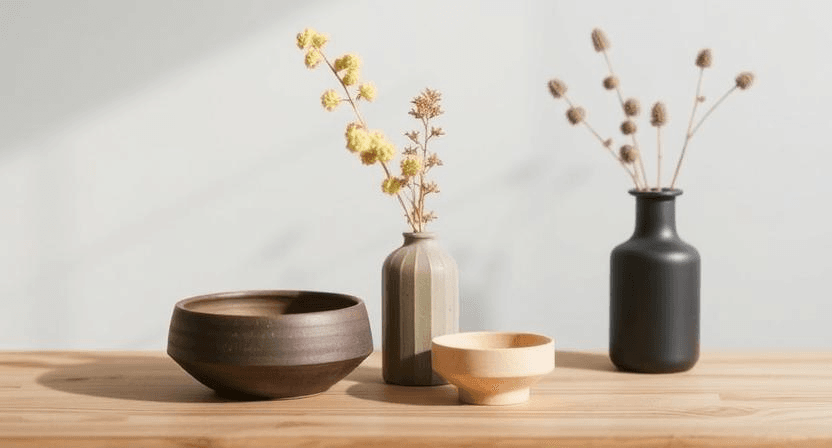Your cart is currently empty!

The Rise of Minimalist Handcrafted Goods: Simple, Sustainable, and Stylish
In recent years, the world of craftsmanship has experienced a remarkable shift, with minimalist handcrafted goods becoming a dominant trend. Consumers are increasingly drawn to simple, sustainable, and stylish products that not only reflect personal style but also contribute to a more eco-conscious lifestyle. This shift toward minimalism is more than just a design preference—it’s a movement that speaks to the values of sustainability, mindfulness, and a desire for timeless, functional beauty.
1. What is Minimalist Crafting?
Minimalist crafting focuses on the concept of “less is more.” It emphasizes clean lines, subtle aesthetics, and functionality over excessive ornamentation. In a world overloaded with mass-produced, disposable items, minimalist handcrafted goods offer a refreshing alternative. These pieces are often made with high-quality materials, showcasing the artisans’ skill and creativity, while keeping designs simple yet elegant.
2. The Appeal of Simplicity and Sustainability
As people become more aware of the environmental impact of their consumption habits, there’s a growing desire for products that are not only beautiful but also sustainable. Minimalist handcrafted goods fit perfectly into this trend. Made from natural, eco-friendly materials such as wood, clay, metal, and sustainable fabrics, these products are designed to last for years, reducing the need for constant replacement. The simplicity of these items means they don’t go out of style, making them timeless additions to any home or wardrobe.
3. The Environmental Impact of Minimalist Crafting
One of the biggest draws of minimalist handcrafted goods is their reduced environmental impact. Many of these goods are made by small, local artisans who use sustainable production methods, ensuring that the crafting process has a minimal carbon footprint. Additionally, the materials used are often renewable, recyclable, or biodegradable, contributing to a circular economy. This approach contrasts sharply with fast fashion and mass production, where overproduction and waste are major concerns.
4. How Minimalist Crafting Is Shaping the Handmade Goods Industry
The rise of minimalism has disrupted traditional crafting markets. Artisans are shifting away from overly elaborate designs, focusing instead on simplicity, quality, and practicality. Consumers are increasingly looking for items that align with their values of sustainability and slow living. Whether it’s a handwoven blanket, a minimalist wooden chair, or a simple leather wallet, minimalist handcrafted goods offer an authenticity and durability that mass-produced items cannot.
5. How to Incorporate Minimalist Handcrafted Goods into Your Life
Incorporating minimalist handcrafted goods into your lifestyle doesn’t have to be difficult. Start by choosing items that align with your personal taste and values. Opt for versatile, high-quality pieces that can serve multiple functions. For example, a minimalist wooden tray can be used in the kitchen, on your desk, or as a decorative piece. A handcrafted leather bag can be both a stylish accessory and a functional everyday item.
6. Supporting Local Artisans and the Handmade Movement
By choosing minimalist handcrafted goods, consumers are also supporting local artisans and small businesses. These artisans take pride in their work, often using age-old techniques passed down through generations. Purchasing from them not only ensures the creation of unique, high-quality items but also helps preserve traditional crafts and supports a more sustainable economy.
7. The Timelessness of Minimalist Designs
What makes minimalist handcrafted goods so attractive is their timelessness. Unlike trendy items that quickly fall out of style, minimalist designs remain relevant across seasons and years. This timeless quality makes them excellent investments, as they will continue to add value to your life long after they’ve been purchased. A minimalist wooden chair, for example, may serve as a statement piece in your home for decades to come.
Conclusion:
The rise of minimalist handcrafted goods is more than just a passing trend. It’s a reflection of our growing desire for simplicity, sustainability, and timeless beauty. By embracing minimalist crafting, we not only enhance our lives with elegant, functional items but also contribute to a more sustainable and mindful future. Whether you’re purchasing a handcrafted piece for its aesthetic value or its environmental benefits, minimalist craftsmanship represents a conscious shift toward a more sustainable and thoughtful way of living.